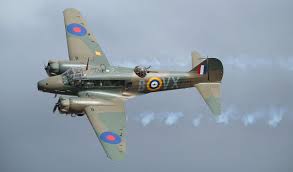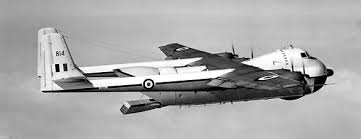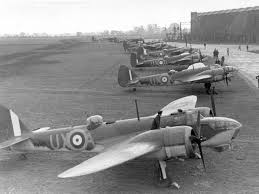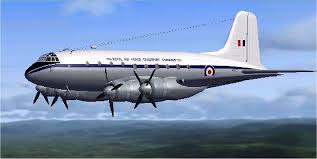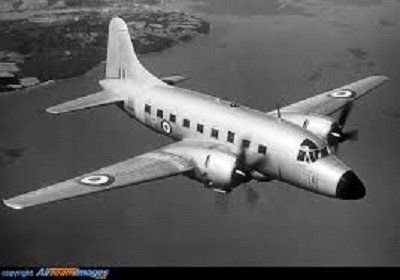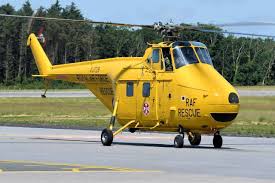Aircraft that flew from RAF Thorney Island
The Squadron Boards in St Nicholas Church list the squadron names and the aircraft flown from RAF Thorney Island.On this page we attempt to bring to life this record of Island's role in the RAF. We show pictures of the aircraft, their function in the service setting along with some of the exploits of the brave men that flew them.
This roll-call of aircraft shows the range and capability of Britain's aircraft industry in the 1940's: the rapid development of air-frame design and the specialisation for specific roles in the RAF. Modern military aircraft attempt to be multi-functional and take decades to reach service. In the 1940's air war, there wasn't time for this. A wide range of British manufacturers - names lost to us today, created the craft to free Europe from tyranny.
As we build this section, please advise me of any errors, omissions or additions - before they are lost in time!
Fairey Albacore
From the same manufacturer as the Swordfish, this was an obsolete design by the time it was at Thorney. With the Hudson, this aircraft was flown by the Royal Canadian Air Force (Squadron 415) Aug 41 to Apr 44 - possibly in a trainer/conversion role.
Fairey Albacore
Hawker Siddley Andover
The Andover dates from the 1970's serving in the Operational Conversion Unit with 46 Sqdn & 242 Sq. OCU from Sept 70 to the station closure. A derivative of a Hawker Siddley civil aircraft, it served as a general transport aircraft.
Avro Anson
Flown by 48 Sq., here Oct 38 for a month then returning Sept 39 to July 1940. initially an all purpose transport, its defence required a rear turret as hostilities commenced.
Avro Anson
Armstrong Whitworth Argosy
Another heavy lifter from the 1960's, the Argosy was a heavy transport with large tailgate between twin booms. One of a number of 242 Sq OCU's pool of craft on which to train pilots and aircrew for long range flight.
Grumman Avenger
An American carrier design flown by the Fleet Air Arm Sq. 848, 849 & 855 June to Sept. 1944. Probably ashore from their carriers to support D-Day and break-out into Normandy by dive bombing sorties.
Grumman Avenger
Fairey Barracuda
The Barracuda was another short-term resident Jan-Apr 1945 - ashore from its carrier. Flying a from air-craft carriers to torpedo or bomb shipping, the Tirpitz was one a recipient of its attention.
Fairey Barracuda
Tirpitz Attack
Fairey Battle
The Battle was tasked as an air defense fighter, but low speed and lack of forward firing guns put its 2-man crew at extreme danger. It demonstrated the fast evolving battle tactics outstripped early designs.
Bristol Beaufort
The Beaufort was the first arrival with 22 Sqdn equipped along with Vildebeests in Feb 38 - Apr 40. 22 Sqdn returned to Thorney Island with Beaufort from June to October 41. The Beaufort was primarily a coastal bomber used earlier for recce, then as a bomber to counter U-boats.
Bristol Beaufort
Bristol Beaufighter
The Beaufighter was a formidable craft, with roles as night-fighter, coastal defense and ground attack. On Thorney with 217 Sqdn Oct 41 to Feb 42 and returning with 703, 36 & 248 Sqdns from Apr 45 to May 48.
The Paris Attack
Bristol Blenheim
The Blenheim was a light bomber arriving in June 1940 with 235 Sqdn, leaving Mar 41.
Blenheim Bomber
Bristol Brigand
The Brigand arrived in Thorney in May 46 with 43 & 254 Sqdns, leaving in October 47.
Lockheed Flying Fortress
The Flying Fortress was an American design applied in the daylight bombing strategy. The Fortress was at Thorney with 206 & 200 Sqdns Sept 43 to Feb 44. The 'Memphis Belle' and 'Catch22' movies tell the story of their crews.
Flying Fortress
Hawker Fury Mk1
Not stationed here but crashed in 1933, the Fury was the fastest fighter bi-plane of its day. Superceded by the monoplanes emerging from the Sneider Trophy races, the Fury was at the pinnacle of biplane design. The Mk2 Fury emerged as a monoplane at the end of 1944.
Handley Page Hampden
The Hampden was a light bomber on Thorney from Aug 41 to Apr 44 with 415 Sq RCAF and for June-July 1942 with 489 Sqdn.
Hampden Bomber
Handley Page Hastings
Another craft of 242 OCU, this transport plane was on Thorney Jan 62 - Feb 67.
Lockheed C-130 Hercules
The C-31 Hercules was the workhorse of the RAF transport wing. Here with 242 OCU from April 1967 til station close, it was and still is a common sight and sound around the Sussex skies.
A very flexible aircraft produced in several formats by its American maker, Lockheed.
Lockheed Hudson
The Hudson medium bomber was here May-July 1941 with the RCAF 407 Sqdn, returning with 280 & 233 Sqdns Dec 41 - Feb 42.
Hudson Bomber
Avro Lancaster
The lumbering giant of the Battle of Britain squadron, this beast delivered huge destruction on its sorties, the most famous being the Dam Buster raid. On Thorney with 278 Sqdn's Wellingtons from Feb - Oct 45 and 703 Sqdn Apr 45 to May 48 with their Beaufighters and Warwicks.
Avro Lancaster
Grumman Liberator
The Liberator was an American designed bomber serving with 86 Squadron Aug 42 to Mar 43 and 59 Sqdn Apr 42 - May 43.
Liberator Bomber
Gloster Meteor
The first allied jet fighter to enter service, the Meteor was on Thorney with 63, 56, 87, 222 & 26 Squadrons from Dec 47 to Feb 1950.
Gloster Meteor
Meteor vs V1 Rocket
de Havilland Mosquito
A beautifully light monocoque of plywood construction, the Mosquito was powered by two Merlin engines. Fast and light, delivering the same load as the Fortress, the Mosquito had a variety of roles. On Thorney Jun 44 to Jan 45 with 21 RAF, 464 Royal Australian Air Force and 487 Royal New Zealand Air Force.
de Havilland Mosquito
The versatility of the Mosquito put it in many applications where speed and decisive destruction was required. It is the epitome of the design and production technology that made such a tactical impact in the 1940's air war.
Mosquito Footage
Eindhoven Raid
Norway Attack
Consequently, there are a number of missions that the Mosquito is renowned for. The '633 Squadron' movie tells one such precision bombing sortie, but there are so many others to be found on the web.
Hawker Nimrod
With a similar profile to the Fury, this biplane was on Thorney from Apr 38 to Feb 40 with the School of Ground Reconnaissance (GR). Clearly out performed by what the Luftwaffe put up against the RAF at that time.
Hawker Osprey
The Osprey is another vintage folding biplane of the 1930's, produced as a spotter and a float plane, capable of landing on water. The quiet of Thorney Channel seems a natural place for a sea-plane. Here with School of GR Apr 1938 to Feb 1940.
Supermarine Spitfire
Well known Battle of Britain fighter was on Thorney for a short time Jul-Aug 1942, with 129 Sqdn. Possibly here to beef up the defense of Portsmouth against blitz attack, when all was in the balance.
Supermarine Spitfire
Fairey Swordfish
Known non-too affectionately as the string-bag, this torpedo bomber was obsolete by the 1940's yet had range enough to complete several decisive sorties and return it 3-man crew to its carrier. On Thorney with 818, 812, 816, 819, 811, 838 and 842 Fleet Air Arm Squadrons from May 40 - Jan 45.
The Taranto Raid
Hawker Typhoon
A powerful aircraft delivering ground attack capability by 500lb bombs or rockets, the Typhoon was part of the liberation of Europe, denying the Weirmacht movement and resupply. Here on Thorney with 164, 193, 183 & 197 Sqdns March to June 1944.
Hawker Typhoon
Vickers Valetta
This two engine transport was on Thorney from 1950 with No.2 Air Navigation School. I suppose its a flying classroom?
de Havilland Vampire
This early jet fighter was another of No.2 Air Navigation School's fleet from the 1950's. Things happen faster in these. A variant was the Sea Vampire on carriers, perhaps one of the first jets in service on aircraft carriers?
Vickers Vildebeest
Another of the early biplanes that graced the grass at RAF Thorney Island in the late 1930's. Here with 22 & 42s Sqdns from Feb 1938, 42 leaving in Aug 39 (perhaps on carrier?) and 22 leaving Apr 1940. Likely in use as a Recce duties in the Channel.
Supermarine Walrus
A small flying boat by the same outfit that produced the Spitfire, as flying boats was their specialty. Here April 38 - Feb 40 with the School of GR. At home at sea with wheels up, the Walrus could be carried at sea with wings folding back along its fuselage. Every boat should have one.....
Vickers Wellington
The Wellington was a heavy bomber at Thorney April-June 1940 with 3GRU, then Feb - Oct 1945 with 278 Sqdn's Lancasters, possibly supporting the push across the Rhine. The Wellington returned in May 1950 with No.2 Air Navigation School.
Westland Whirlwind
Not to be confused with the powerful twin -engined fighter of 1945, the Whirlwind helicopter was on Thorney on Air Sea Rescue duties with 22 Sqdn 3 times: Feb55 - Dec 59; May 64 - Mar 73 & Apr 74 til station closure.




